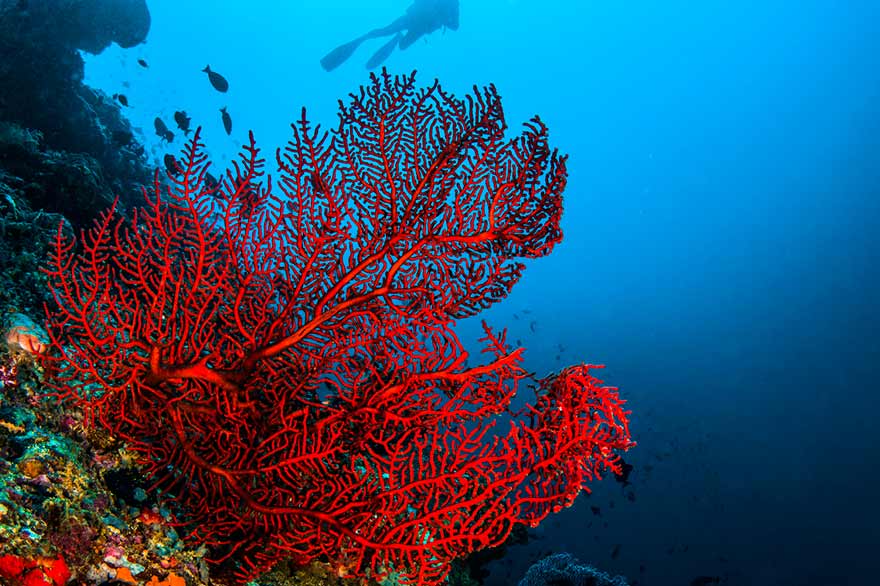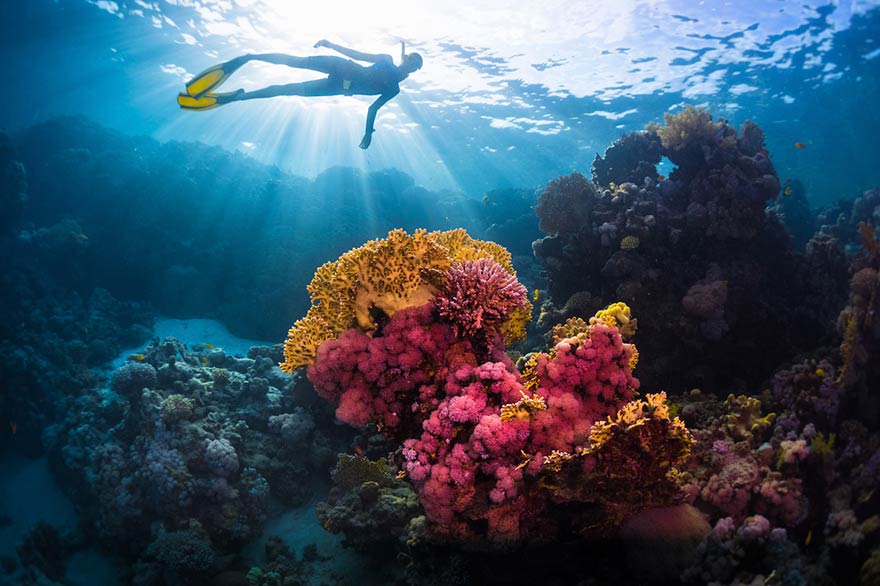
13 Oct Coral Reef in Punta Cana
Coral Reef in Punta Cana
The Dominican Republic has incredible natural spaces and so much to offer, both for those looking to relax on its sandy beaches and for those searching for unique experiences such as diving or snorkelling, since the Dominican Republic is one of the most popular spots in the Caribbean for practicing these sports.
Diving into the waters on the beaches of the Dominican Republic is truly a unique experience due to the calmness and transparency of the sea. Without a doubt, one of the best ways to discover all the richness of its waters is to go snorkelling or diving in Punta Cana and, specifically, in Playa Bávaro.
Snorkelling in Playa Bávaro
Playa Bávaro is a unique natural setting and one of the main tourist destinations in the country, to the point of having been placed among the ranking of the best beaches in the Dominican Republic.
Its crystal clear, calm and transparent waters make Playa Bávaro one of the best destinations in the world for going snorkelling with your family or group of friends.
A perfect activity to dive headfirst into a world full of beauty and colours, with the most exotic and striking fish and the most incredible vegetation that you could ever imagine. A truly unforgettable experience!

In addition, the easy accessibility and calmness of its waters make it an ideal activity for the littlest ones in the family. In fact, it is highly recommended for doing as a family, when travelling with children who also want to explore nature. Your little ones will be fascinated with the marine universe and parents will get to enjoy seeing how their kids discover a totally unknown world that they would have never got to know through just books or documentaries alone.
Snorkelling allows you to discover one of the most incredible treasures of the Caribbean seabed: the reef in Punta Cana.
The importance of coral reefs
Corals are animals whose growth resembles stones, stuck to the bottom of the sea without being able to move. Several corals form a coral reef, which is an ecosystem just like the rainforest. Just as a group of trees form a jungle, the grouped corals form what is known as a reef. And one of the most famous is the reef in Punta Cana.
Reefs are home to 25% of the sea’s biodiversity and are hugely important. Among other aspects, in addition to serving as a home for numerous marine animal and plant species, they also act as a natural barrier against the action of waves or currents, and consequently, they prevent beach erosion.
However, coral reefs are currently in danger due to human actions, such as trawling, and due to climate change, which affects the temperature of the water. Coral is very delicate and as soon as the temperature changes just a few degrees, it dies.
On June 16, 2017, the history of the Dominican Republic was changed as a result of the issuance of Resolution 0023-2017, which prohibits the capture and commercialisation of sharks, rays, herbivorous reef fish and urchins, as well as all related products.
The issuance of this resolution came from the authorities who saw that there was an urgent need to protect the few species of sharks that remained in the territorial waters. Restricting the fishing of these species also helped to promote the survival of the coral reefs.
Young people united in protecting the coral reef
The World Heritage Youth Project organised by UNESCO on marine biodiversity and climate change aims to strengthen the link between Small Island Developing States (SIDS) of the Caribbean and the Central American countries (CAM) by empowering young people and their organisations and strengthening their capacities in the planning of world heritage conservation projects.
In this project, 14 young people were selected, each one with experience in matters related to marine biodiversity and climate change.
The participants had the opportunity to discuss different issues with experts and researchers in relation to biodiversity, the impact of climate change and the administration of the Coiba National Park, a World Heritage Site. The flora and fauna and their value were also documented to make maps of tourist routes that were presented to the administration of the national park.
Coral reef in the Parque Natural del Este
If you love to dive, you should know that the Parque Natural del Este also has a beautiful coral reef, baptised in its day by Christopher Columbus as “The Gardens of the Queen”. It is a protected natural area, but open to diving tourism. Access is limited, so it is important to make a reservation with companies that will take you there so that you can enjoy all of its beauty.

In addition, within this natural park is also the Catalina reef, famous for having a wall that is more than 100 metres deep. And, as if that weren’t enough, in this area you can dive among wrecks. A holiday or an adventure? In Punta Cana there are always so many things to discover that will guarantee you remember these holidays for the rest of your life.





No Comments